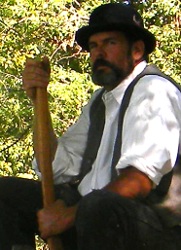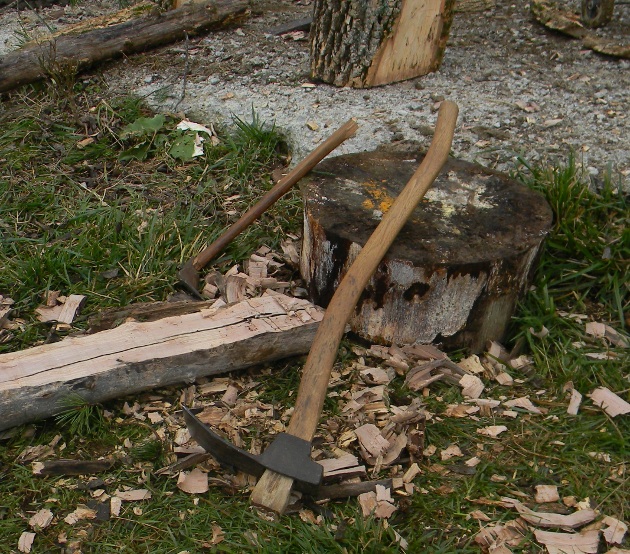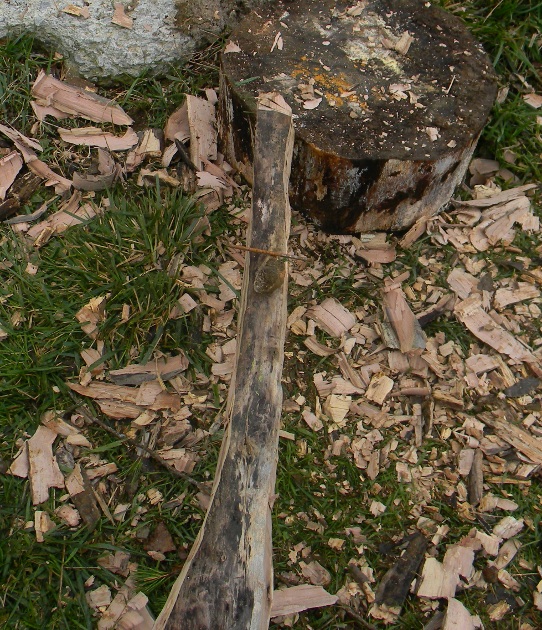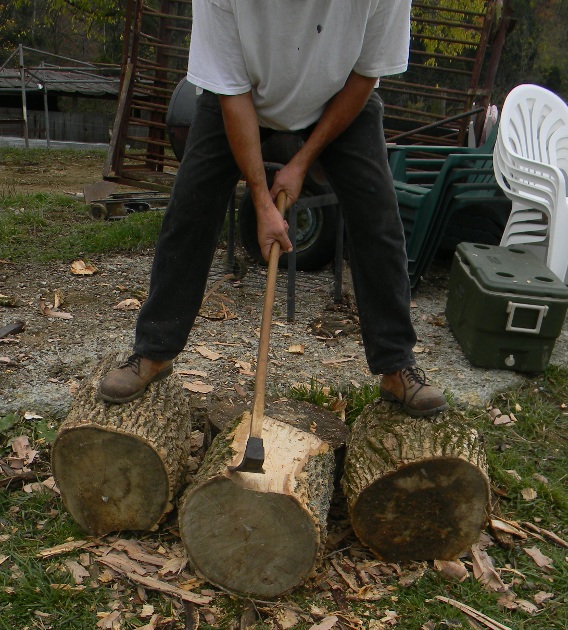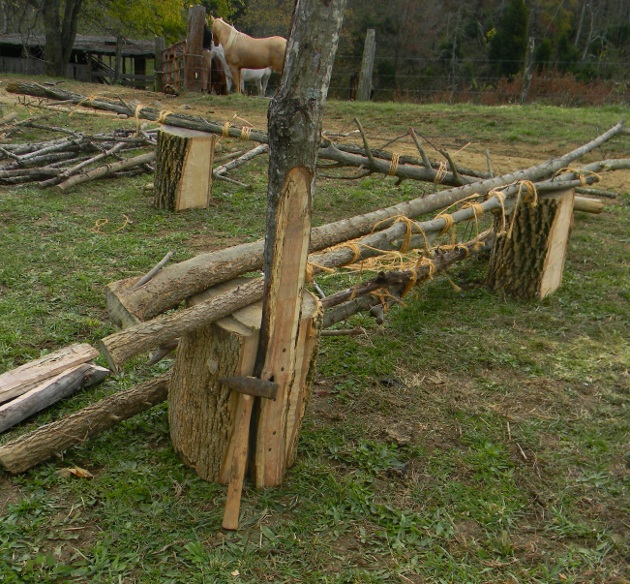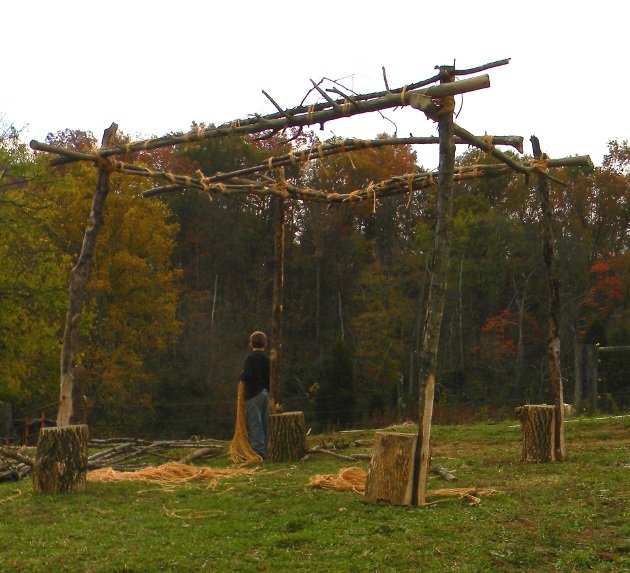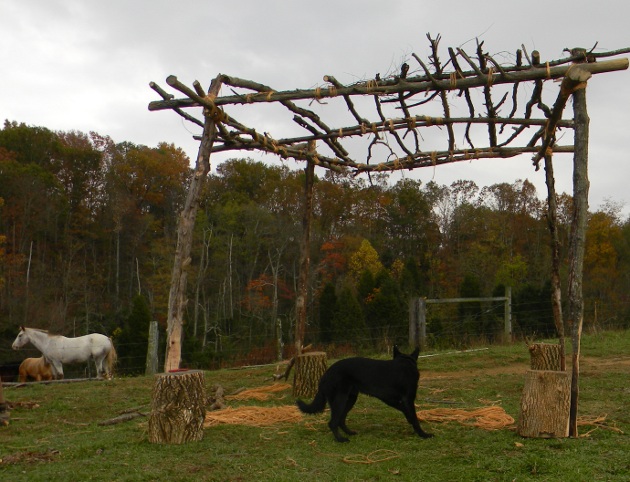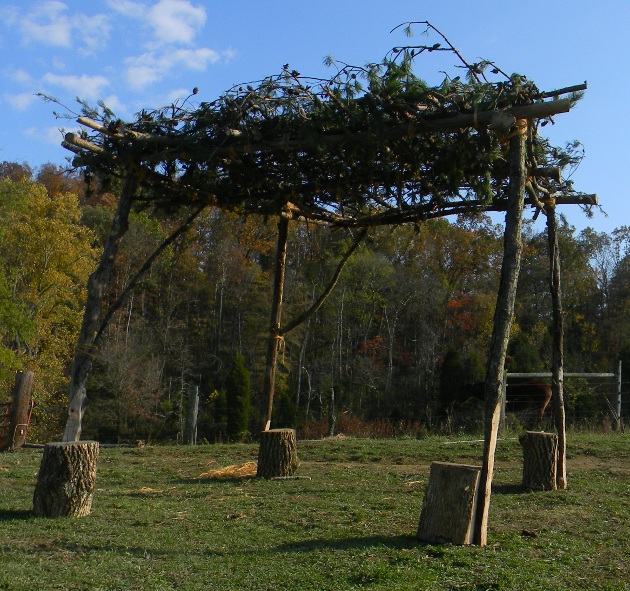You are herePictures of making a brush arbor
Pictures of making a brush arbor
We had a prayer and praise gathering on October 31st; and I built a brush arbor for the occasion. A brush arbor is a primitive structure for shade and limited shelter in areas that had no church built. A circuit riding preacher would come and hold a service under this arbor.
Since this one was used in a cow and horse pasture, I didn't want to dig post holes in the ground, which could later injure an animal or rider. The solution was to get our largest unsplit firewood pieces, and split a section off the edge, which served as a flat place to attach the upright poles. Since I was busy with my usual work and other preparations for the gathering; I gave the children instructions as to what dimensions of dead wood I wanted from the forest, and had them gather it. I might have brought in the same pieces, but what they got was mostly Dogwood, which is very hard. This wasn't difficult for the adze work, but was very difficult for the nailing part.
Anyway, I had some rather large nails, but not large enough to secure the poles in their original diameter. So I used a foot adze to flatten two sides of the base of each pole. I've done this sort of work a number of times, especially when making a Hickory maul to use with Dogwood gluts. But I've always done it with a smaller piece of wood between the piece being worked on, and the unmovable object. The piece being worked on constantly is moving toward me, as per the direction of the adze blows.
Often I work with a tree against my back, and the smaller piece of wood keeps the work out where I can strike it. The problem is always that this smaller piece of wood moves about, it continually needs repositioning. This time I had a very pleasant breakthrough; I used a large diameter, but short log section as the spacer piece. The spacer piece of course must be wood, so that any adze strikes against it won't dull the sharp tool.
This time I used a concrete backstop. First I did the poles; then you can see me standing atop alternate log sections to finalize what the wedge and hammer started on them. I used natural colored hay bale twine to lash the joints, I thought it very important to maintain the natural look; and not use modern orange and white stripe twine. I was concerned that the upper horizontal poles were either too short or weak to use by themselves, that's why most of the five long ones are doubled with lots of twine. I made it a point to use more twine than I thought necessary, just to be safe. Note that the large anchor pieces are turned inward; this would allow for placing barn boards over them, in order to make benches on two or three sides.
The middle horizontal pole allowed me to use shorter sticks as final support of the green boughs above. I didn't lash the shorter sticks to the larger horizontal poles. I would have used green Poplar or Sycamore, but it was too late in the year, so I settled for Virginia Pine boughs.
This made a very nice visual centerpiece for the event. My intention was to punctuate the event with things like testimonials and even a preacher arriving on horseback; to deliver a short message about light and darkness, but we gave him too short of notice, and didn't enjoy that feature. We had a large bonfire arrange in a more lengthwise shape; which worked out well, everyone had a place to get warm.
In one of the pictures you'll see the 2.5 or 3 lb cross peen hammer I used to drive the nails. A smaller hammer wouldn't have touched the task.
 link to
link to
